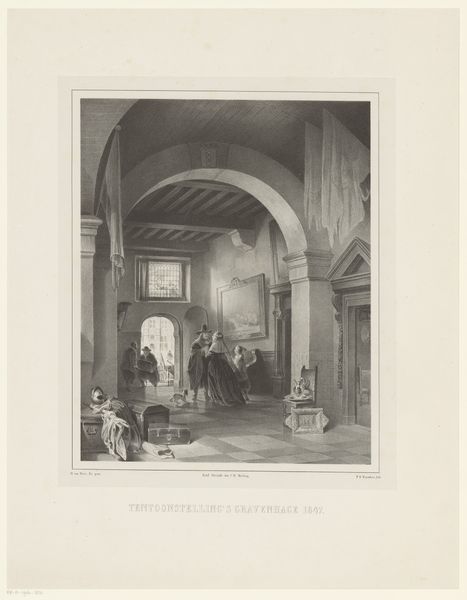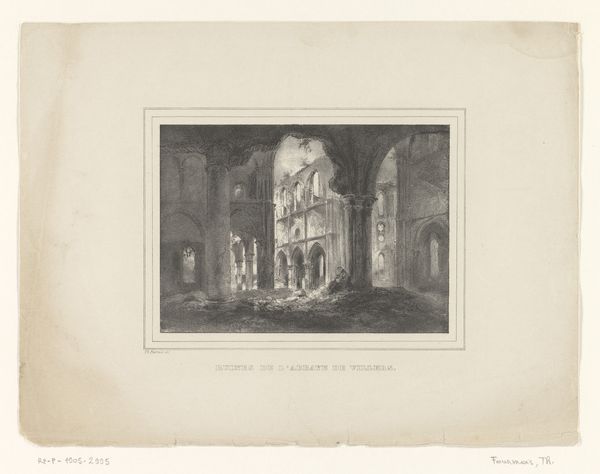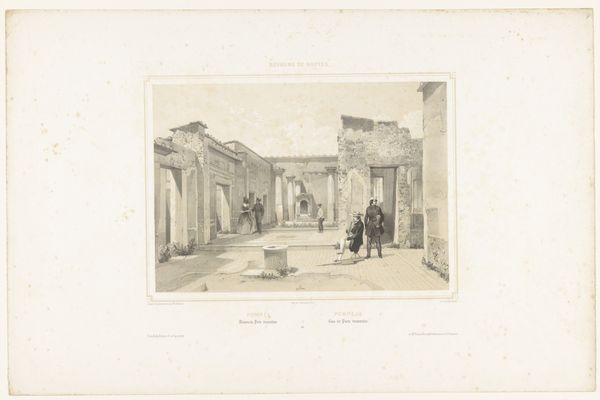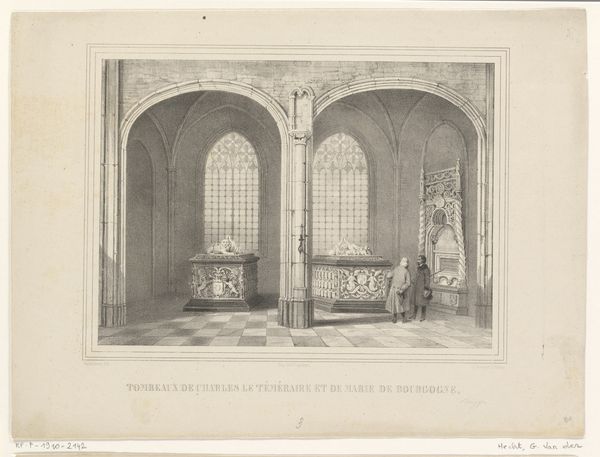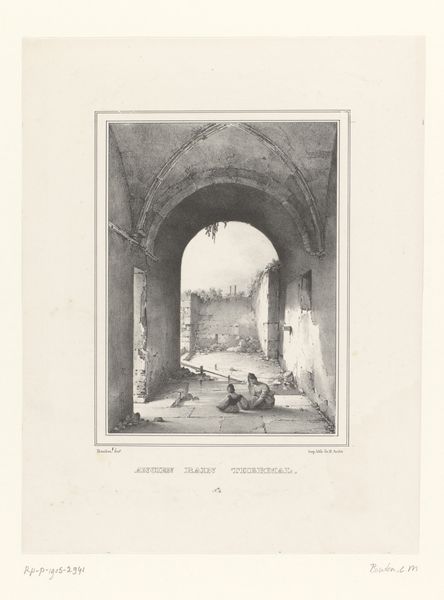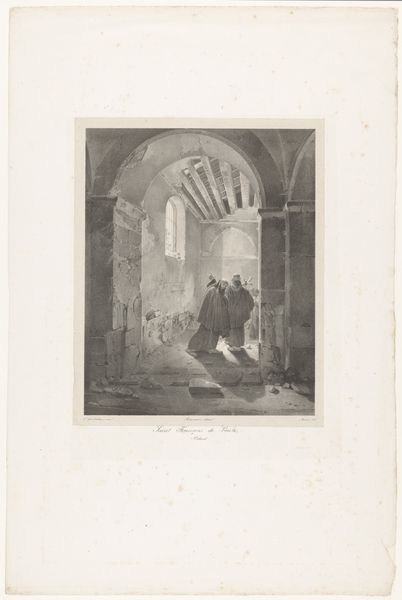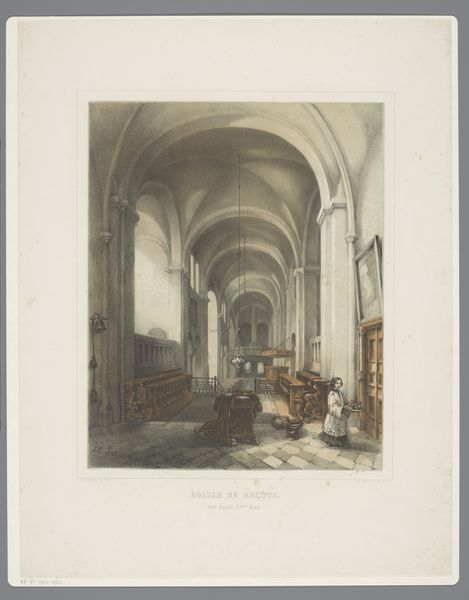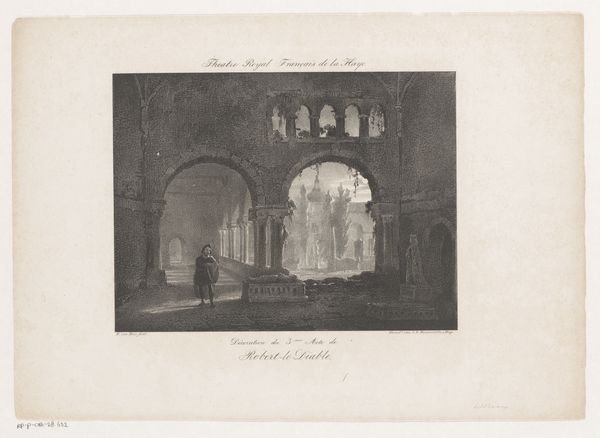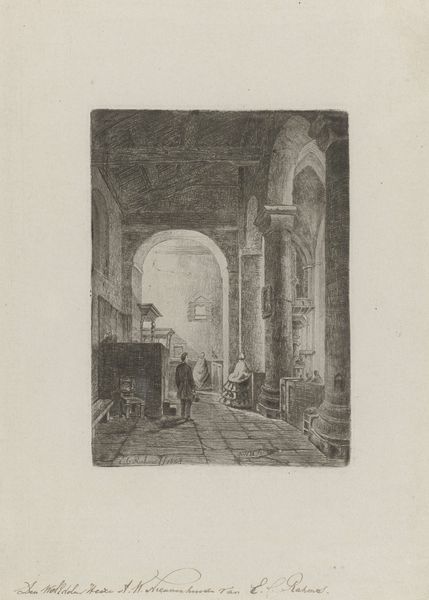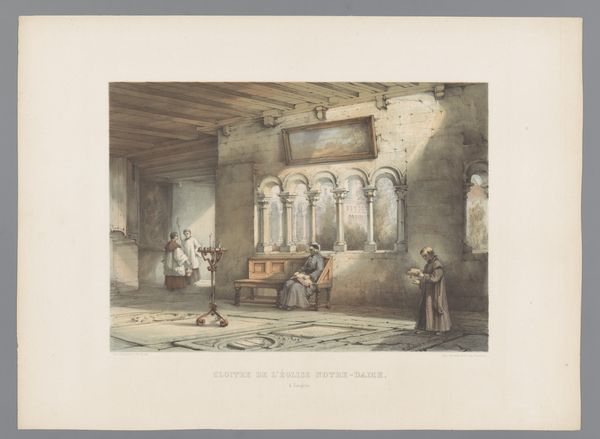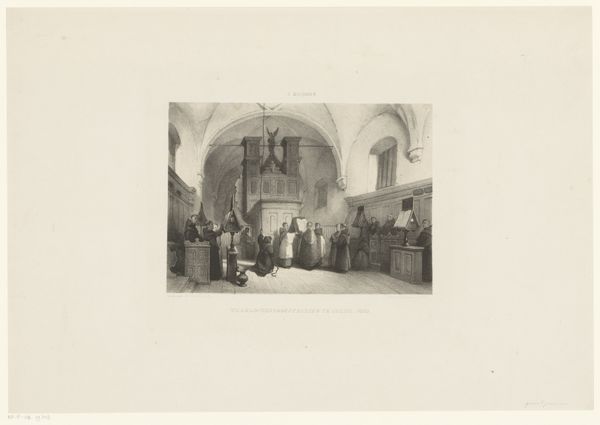
drawing, print, etching, paper, ink
#
drawing
# print
#
etching
#
landscape
#
paper
#
ink
#
genre-painting
#
paper medium
#
watercolor
#
realism
Dimensions: height 235 mm, width 277 mm
Copyright: Rijks Museum: Open Domain
Curator: Here we have A. Girardot’s "Interior of the Grote Kerk in The Hague," an etching on paper created in 1837. What’s your initial impression? Editor: Immediately, it feels heavy, monumental. The stark contrast and shadowed areas lend it a somewhat austere, even melancholic, air. The architectural space dwarfs the figures, doesn't it? Curator: Absolutely. Consider the context: 1837, a time of significant industrial and social change. Girardot chose etching—a printmaking technique capable of mass production—to depict this traditional church. This hints at how traditional spaces and methods are being documented, perhaps even consumed, in a changing society. Editor: That's fascinating. The Grote Kerk itself, though, stands as a powerful symbol, a beacon through time. Think about its towering arches and vaulted ceilings depicted in great detail, seemingly defying the ephemerality often associated with printed materials like paper. The family walking their dog towards the cathedral becomes allegorical, perhaps representative of piety? Curator: It's a subtle detail, but a key one. The medium—etching—would have required careful planning and execution. The very act of depicting a permanent structure, one designed for communal worship, via a mass-produced medium, suggests a democratisation of art itself, a wider accessibility to powerful religious imagery and concepts. Editor: But doesn't the linear quality, inherent in the etching process, emphasise the structural rigidity, almost making the divine feel mechanical, devoid of warmth? Are the beams in the structure reminders of past crafts, or simply showing what holds the monument together? Curator: Precisely. It compels us to examine not just the grand image but also the method behind it. The artist is mediating a space designed for transcendence. Note, too, the subtle shading that lends depth to the massive walls and pillars—it's not merely representational; it's constructed. Editor: It's that dance between symbolism and process that intrigues. The way Girardot plays with the architectural space to create emotional resonance using a medium known for its reproducible qualities. It gives you a glimpse of culture that feels permanent. Curator: It truly invites reflection on what elements build not only art but society as well, doesn't it? Editor: Agreed. What is deemed sacred or memorable?
Comments
No comments
Be the first to comment and join the conversation on the ultimate creative platform.
